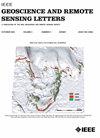基于多卷积神经网络的特征融合SAR目标识别
IF 4
3区 地球科学
Q2 ENGINEERING, ELECTRICAL & ELECTRONIC
引用次数: 38
摘要
目标识别一直是合成孔径雷达(SAR)图像解译中的热点问题之一。然而,散斑噪声的存在和鲁棒性特征的缺乏使得SAR识别难以处理。近年来,卷积神经网络在模式识别方面取得了较好的研究成果。本文提出了一种综合利用SAR图像强度和边缘信息的目标识别框架。该框架包含三个部分,即特征提取块、特征融合块和最终分类块。此外,还提出了一种新的特征融合方法,可以保留不同特征之间的空间关系。在minsar数据上的实验结果表明了该方法的有效性。本文章由计算机程序翻译,如有差异,请以英文原文为准。
Feature-Fused SAR Target Discrimination Using Multiple Convolutional Neural Networks
Target discrimination has been one of the hottest issues in the interpretation of synthetic aperture radar (SAR) images. However, the presence of speckle noise and the absence of robust features make SAR discrimination difficult to deal with. Recently, convolutional neural network has obtained state-of-the-art results in pattern recognition. In this letter, we propose a target discrimination framework that jointly uses intensity and edge information of SAR images. This framework contains three parts, namely, feature extraction block, feature fusion block, and final classification block. In addition, a novel feature fusion method that can preserve the spatial relationship of different features is introduced. Experimental results on the miniSAR data demonstrate the effectiveness of our method.
求助全文
通过发布文献求助,成功后即可免费获取论文全文。
去求助
来源期刊

IEEE Geoscience and Remote Sensing Letters
工程技术-地球化学与地球物理
CiteScore
7.60
自引率
12.50%
发文量
1113
审稿时长
3.4 months
期刊介绍:
IEEE Geoscience and Remote Sensing Letters (GRSL) is a monthly publication for short papers (maximum length 5 pages) addressing new ideas and formative concepts in remote sensing as well as important new and timely results and concepts. Papers should relate to the theory, concepts and techniques of science and engineering as applied to sensing the earth, oceans, atmosphere, and space, and the processing, interpretation, and dissemination of this information. The technical content of papers must be both new and significant. Experimental data must be complete and include sufficient description of experimental apparatus, methods, and relevant experimental conditions. GRSL encourages the incorporation of "extended objects" or "multimedia" such as animations to enhance the shorter papers.
 求助内容:
求助内容: 应助结果提醒方式:
应助结果提醒方式:


